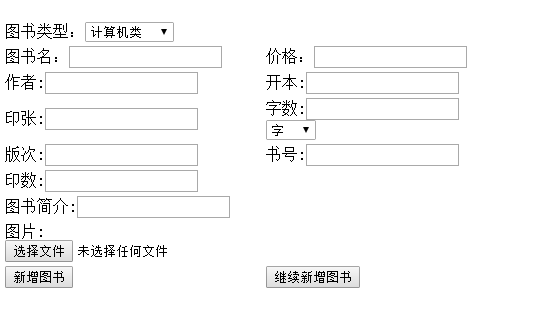前言
.net core 出来有一时间了,这段时间也一直在做技术准备,目前想做一个单点登录(SSO)系统,在这之前用.net时我用习惯了machineKey ,也顺手在.net core 中尝试了一上,结果发现不好使了,也不起作用,于是开始了网上学习。
实现方法
功夫不负有心人,网上高人还是多,在github.com上面ISSUES中也有人在讨论此问题,于是找到代码尝试,结果实现了。
直接上代码,我们需要先封装一个XmlRepository,Key的格式如下:
<?xml version="1.0" encoding="utf-8"?>
<key id="cbb8a41a-9ca4-4a79-a1de-d39c4e307d75" version="1">
<creationDate>2016-07-23T10:09:49.1888876Z</creationDate>
<activationDate>2016-07-23T10:09:49.1388521Z</activationDate>
<expirationDate>2116-10-21T10:09:49.1388521Z</expirationDate>
<descriptor deserializerType="Microsoft.AspNetCore.DataProtection.AuthenticatedEncryption.ConfigurationModel.AuthenticatedEncryptorDescriptorDeserializer, Microsoft.AspNetCore.DataProtection, Version=1.1.0.0, Culture=neutral, PublicKeyToken=adb9793829ddae60">
<descriptor>
<encryption algorithm="AES_256_CBC" />
<validation algorithm="HMACSHA256" />
<masterKey p4:requiresEncryption="true" xmlns:p4="http://schemas.asp.net/2015/03/dataProtection">
<!-- Warning: the key below is in an unencrypted form. -->
<value>WYgZNh/3dOKRYJ1OAhVqs56pWPMHei15Uj44DPLWbYUiCpNVEBwqDfYAUq/4jBKYrNoUbaRkGY5o/NZ6a2NTwA==</value>
</masterKey>
</descriptor>
</descriptor>
</key>
XmlRepository代码:
public class CustomFileXmlRepository : IXmlRepository
{
private readonly string filePath = @"C:\keys\key.xml";
public virtual IReadOnlyCollection<XElement> GetAllElements()
{
return GetAllElementsCore().ToList().AsReadOnly();
}
private IEnumerable<XElement> GetAllElementsCore()
{
yield return XElement.Load(filePath);
}
public virtual void StoreElement(XElement element, string friendlyName)
{
if (element == null)
{
throw new ArgumentNullException(nameof(element));
}
StoreElementCore(element, friendlyName);
}
private void StoreElementCore(XElement element, string filename)
{
}
}
Startup代码:
public class Startup
{
public Startup(IHostingEnvironment env)
{
var builder = new ConfigurationBuilder()
.SetBasePath(env.ContentRootPath)
.AddJsonFile("appsettings.json", optional: true, reloadOnChange: true)
.AddJsonFile($"appsettings.{env.EnvironmentName}.json", optional: true)
.AddEnvironmentVariables();
Configuration = builder.Build();
}
public IConfigurationRoot Configuration { get; }
// This method gets called by the runtime. Use this method to add services to the container.
public void ConfigureServices(IServiceCollection services)
{
services.AddSingleton<IXmlRepository, CustomFileXmlRepository>();
services.AddDataProtection(configure =>
{
configure.ApplicationDiscriminator = "Htw.Web";
});
// Add framework services.
services.AddMvc();
}
// This method gets called by the runtime. Use this method to configure the HTTP request pipeline.
public void Configure(IApplicationBuilder app, IHostingEnvironment env, ILoggerFactory loggerFactory)
{
loggerFactory.AddConsole(Configuration.GetSection("Logging"));
loggerFactory.AddDebug();
if (env.IsDevelopment())
{
app.UseDeveloperExceptionPage();
app.UseBrowserLink();
}
else
{
app.UseExceptionHandler("/Home/Error");
}
app.UseStaticFiles();
app.UseCookieAuthentication(new CookieAuthenticationOptions()
{
AuthenticationScheme = CookieAuthenticationDefaults.AuthenticationScheme,
LoginPath = new PathString("/Account/Unauthorized/"),
AccessDeniedPath = new PathString("/Account/Forbidden/"),
AutomaticAuthenticate = true,
AutomaticChallenge = false,
CookieHttpOnly = true,
CookieName = "MyCookie",
ExpireTimeSpan = TimeSpan.FromHours(2),
#if !DEBUG
CookieDomain="h.cn",
#endif
DataProtectionProvider = null
});
app.UseMvc(routes =>
{
routes.MapRoute(
name: "default",
template: "{controller=Home}/{action=Index}/{id?}");
});
}
}
登录代码:
public async void Login()
{
if (!HttpContext.User.Identities.Any(identity => identity.IsAuthenticated))
{
var user = new ClaimsPrincipal(new ClaimsIdentity(new[] { new Claim(ClaimTypes.Name, "bob") }, CookieAuthenticationDefaults.AuthenticationScheme));
await HttpContext.Authentication.SignInAsync(CookieAuthenticationDefaults.AuthenticationScheme, user);
HttpContext.Response.ContentType = "text/plain";
await HttpContext.Response.WriteAsync("Hello First timer");
}
else
{
HttpContext.Response.ContentType = "text/plain";
await HttpContext.Response.WriteAsync("Hello old timer");
}
}
注意
C:\keys\key.xml 这个文件路径可以更改,还有就是也可用共享目录或数据库来实现统一管理
到此可以登录试一下。
以上所述是小编给大家介绍的.net core 1.0 实现单点登录负载多服务器的全部叙述,希望对大家有所帮助!
以上就是.net core 1.0 实现单点登录负载多服务器。我想做一个贪财好色的小女子,以后不用谁喜欢谁不喜欢了,余生我只想拥有美貌,做个俗人,肤浅又快乐。更多关于.net core 1.0 实现单点登录负载多服务器请关注haodaima.com其它相关文章!





